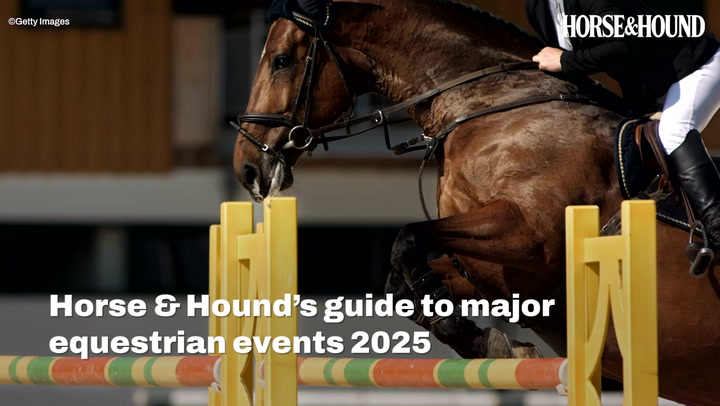It is useful for every horse to be able to shorten and lengthen their canter stride, regardless of what discipline they take part in and to what level. Australian Olympian Chris Burton, uses just two canter poles in this simple pole exercise for horses that will help improve your horse’s strength and coordination so that they can easily alter their stride on request.
1. Place two poles on the ground
“It doesn’t matter where you place the poles, just drop them down without being fussy about the distance in between,” says Chris.
2. Let the horse travel forward in canter
This is particularly important on those horses who struggle to shorten their stride, because it keeps them confident.
“When you know your horse has a big canter stride and finds it difficult to come together, you want to teach them to shorten by playing to their strengths first,” advises Chris.
3. Maintain the same forward pace over both poles
“Don’t push or collect. Let the horse look and adjust if they need to.”
4. Do this several times on both reins
Aim for the poles to be in the middle of a stride (see image below) and the rhythm to stay the same.

5. Count
Now ensure you count the number strides your horse comfortably fits in at this forward pace
6. Add an extra stride between the poles
Do this by quietly sitting and waiting, making small adjustments early.
7. Ask the horse to walk shortly after crossing the second pole
“Use these transitions to help the horse sit behind and start to close up the canter,” explains Chris.
8. Don’t ride too far away from the poles
This is because young and green horses can’t carry the short canter for long.
“They are using their muscles in a different way, so they will get tired and sore quickly.”
9. Finding things difficult
When your horse finds a certain number of strides more difficult, they may break into trot or stumble in canter when the pace loses elevation.
“When the horse says ‘this is hard’, gently ask them to keep going and they will slowly realise that they can,” advises Chris.
10. It doesn’t matter if the canter falls apart
This is because it’s all part of the learning curve.
“Using ground poles means we can challenge a horse so that they realise what they’re being asked for — throughness and to sit behind so that the canter condenses.
“As they get stronger the exercise will become easier, and then you can ask for more power in the canter so that there is more lift off the floor.”
You may also be interested to read…

Nicola Wilson’s simple jumping exercise that gets results
Nicola Wilson shares a useful training exercise which helps teach rhythm, balance and straightness — key to unlocking success in

Subscribe to Horse & Hound magazine today – and enjoy unlimited website access all year round
Horse & Hound magazine, out every Thursday, is packed with all the latest news and reports, as well as interviews, specials, nostalgia, vet and training advice. Find how you can enjoy the magazine delivered to your door every week, plus options to upgrade your subscription to access our online service that brings you breaking news and reports as well as other benefits.





